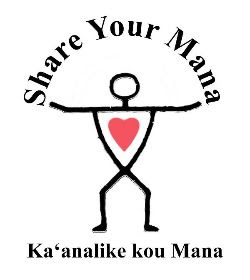Here is an acronym key for the complex subject of Homeless, Houseless and Unsheltered
Acronym Definitions of Key Terms
Please note that key terms used in this report are used for Bridging the Gap (BTG), the Continuum of Care (CoC) Point In Time Count reporting purposes and accurately reflect the data used in this report. Definitions of these terms may differ in some ways from the definitions found in the Homeless Emergency Assistance and Rapid Transition to Housing (HEARTH) Act and in Housing and Urban Development (HUD) regulations.
Chronically Homeless Individual refers to an individual with a disability who has been continuously homeless for one year or more or has experienced at least four episodes of homelessness in the last three years where the combined length of time homeless in those occasions is at least 12 months.
Chronically Homeless People in Families refers to people in families in which the head of household or other adult member has a disability and has either been continuously homeless for one year or more or has experienced at least four episodes of homelessness in the last three years where the combined length of time homeless in those occasions is at least 12 months.
Continuum of Care (CoC) is the local planning body responsible for coordinating the full range of homelessness services in a geographic area.
Emergency Shelter is a facility with the primary purpose of providing temporary shelter for homeless people.
Family Individuals are homeless as part of a household that has at least one adult (age 18 and older) and one child (under age 18).
Homeless describes a person who lacks a fixed, regular, and adequate nighttime residence.
Housing Inventory Count (HIC) is produced by each CoC and provides an annual inventory of beds that assist people in the CoC who are experiencing homelessness or leaving homelessness.
Individual refers to a person who is not part of a family with children during an episode of homelessness. Individuals may be homeless as single adults, unaccompanied youth, or in multiple-adult or multiple-child households.
Other Permanent Housing is housing with or without services that is specifically for formerly homeless people but that does not require people to have a disability.
Parenting Youth are people under age 25 who are the parents or legal guardians of one or more children (under age 18) who are present with or sleeping in the same place as that youth parent, where there is no person over age 24 in the household.
Parenting Youth Household is a household with at least one parenting youth and the child or children for whom the parenting youth is the parent or legal guardian.
Point-in-Time Counts are unduplicated one- night estimates of both sheltered and unsheltered homeless populations. The one- night counts are conducted by CoCs nationwide and occur during the last 10 days in January of each year.
Permanent Supportive Housing (PSH) is a housing model designed to provide housing assistance and supportive services on a long- term basis to formerly homeless people. HUD’s Continuum of Care program, authorized by the McKinney-Vento Act, funds PSH and requires that the client have a disability for eligibility.
Rapid Rehousing is a housing model designed to provide temporary housing assistance to people experiencing homelessness, moving them quickly out of homelessness and into permanent housing.
Sheltered Homelessness refers to people who are staying in emergency shelters or transitional housing programs.
Transitional Housing Programs provide people experiencing homelessness a place to stay combined with supportive services for a longer duration of time than emergency shelters.
Unaccompanied Homeless Youth (under 18)
are people in households with only children who are not part of a family with children or accompanied by their parent or guardian during their episode of homelessness, and who are under the age of 18.
Unaccompanied Homeless Youth (18-24)
are people in households without children who are not part of a family with children or accompanied by their parent or guardian during their episode of homelessness, and who are between the ages of 18 and 24.
Unsheltered Homelessness refers to people whose primary nighttime location is a public or private place not designated for, or ordinarily used as, a regular sleeping accommodation for people (for example, the streets, vehicles, beaches, or parks).
Veteran refers to any person who served on active duty in the armed forces of the United States. This includes Reserves and National Guard members who were called up to active duty.




One comment:
Comments are closed.